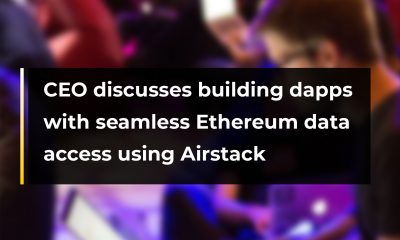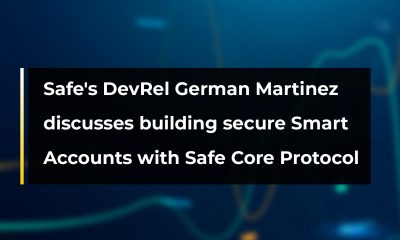FEATURED
DevRel Craig Johnson speaks on how to deploy dapps on Aleo protocol

Craig Johnson, Developer Relations at Aleo gave a talk at EthGlobal explaining the basics of deploying private tokens and applications on Aleo’s ZK layer one network.
Aleo is a blockchain protocol with a strong focus on privacy. Its goal is to enable fully private applications through a scalable and permissionless network, using zero-knowledge (ZK) powered smart contracts.
Aleo’s consensus protocol, AleoBFT, is a unique approach that ensures scalability and privacy while maintaining high security levels.
According to Craig, Aleo is a dedicated platform that provides developers with an effortless way to construct ZK apps.
Developers looking to embark on their Aleo journey will need to set up a few indispensable tools in their development environment.
Git, Rust, and Aleo’s programming language are the key components required for a seamless development workflow. Git serves as a version control system, enabling developers to monitor code changes and collaborate seamlessly with others.
Rust, renowned for its performance, safety, and concurrency features, acts as the primary language for building applications on Aleo.
Additionally, Aleo offers its very own programming language, specifically designed for constructing privacy-focused blockchain applications.
Set up Leo’s wallet
Craig pointed out that interacting with Aleo’s network requires the utilization of a Leo wallet. This wallet acts as a hub for users’ tokens, facilitating various network operations.
After successfully setting up the wallet, the subsequent step involves requesting test tokens through the faucet.
These tokens play a vital role in testing applications on the Aleo network without the need for real cryptocurrency.
Additionally, Aleo offers sample code that developers can either directly use or consult as a reference while exploring more detailed code examples and guidance in Aleo’s documentation.
Craig emphasized that the process of writing code is where the imaginative aspect of development truly takes flight.
Test your code
According to the Developer Relations official, there are several important steps to follow when deploying written code to the Aleo network.
Firstly, it is crucial to test the code locally using the tools and environments provided by Aleo. This ensures that the application functions correctly and allows for early identification and resolution of any issues in the development process.
In addition, before deploying an application on Aleo, it is necessary to record a unique identifier. This identifier can be found in the Leo wallet’s activity and serves as a payment for the deployment of the application. It acts as a digital certificate of authenticity for the project.
During the deployment stage, developers must provide deployment commands to make the application accessible on the Aleo network. It is important to use the correct private key and the previously obtained record during this step.
Deployment essentially involves making the application available for use by the network’s users.
Following the deployment stage, Craig said that it’s important to check the Aleo’s Explorer. The Aleo Explorer is a web-based tool where you can verify the details of the program and its source code.
It’s a critical step to ensure transparency and security. It’s similar to an audit to confirm that the code has been deployed correctly and that it’s functioning as expected.
Read also; Cartesi: Empowering Smart Contract Development with Linux Integration and RISC-V Architecture
























